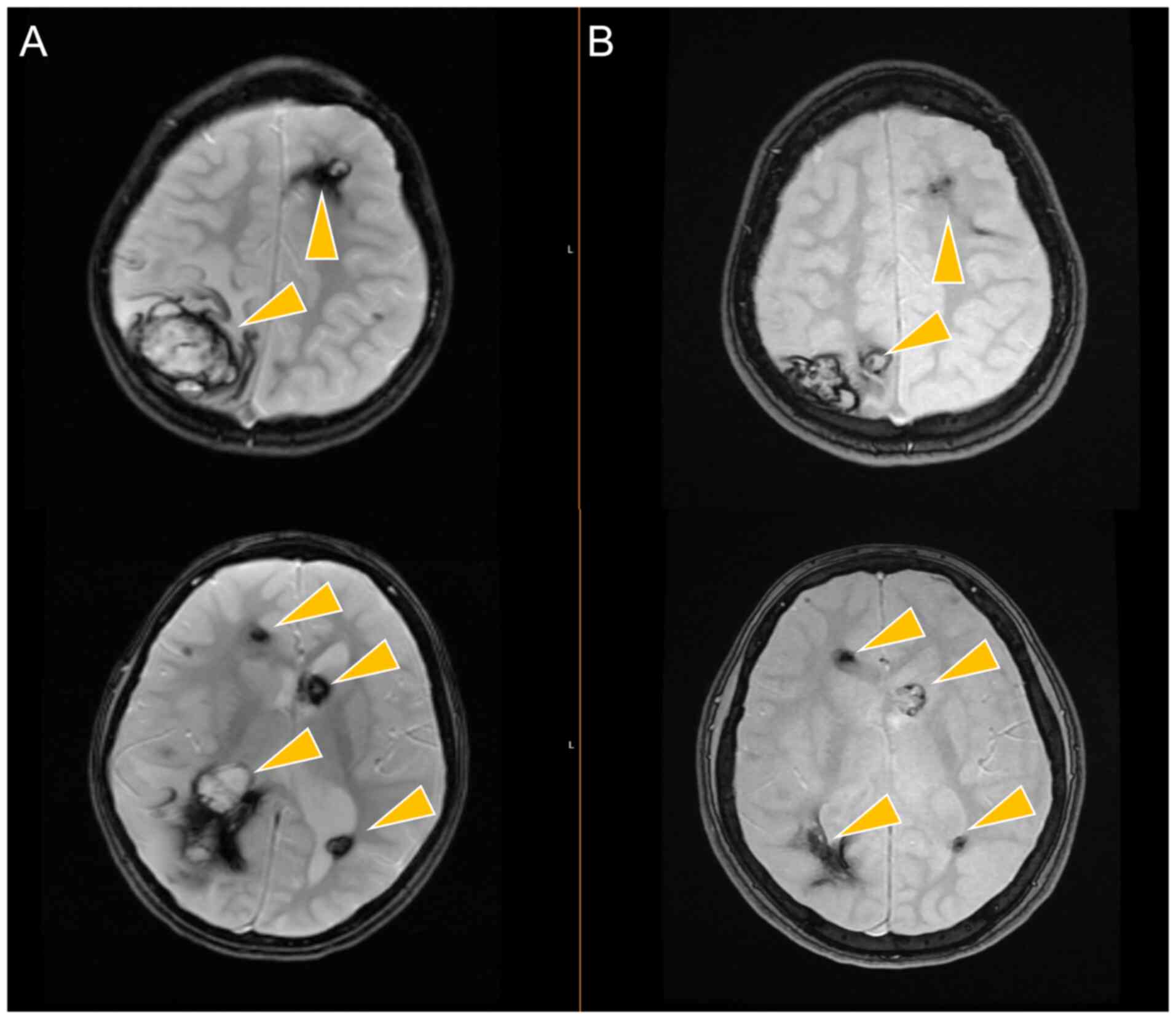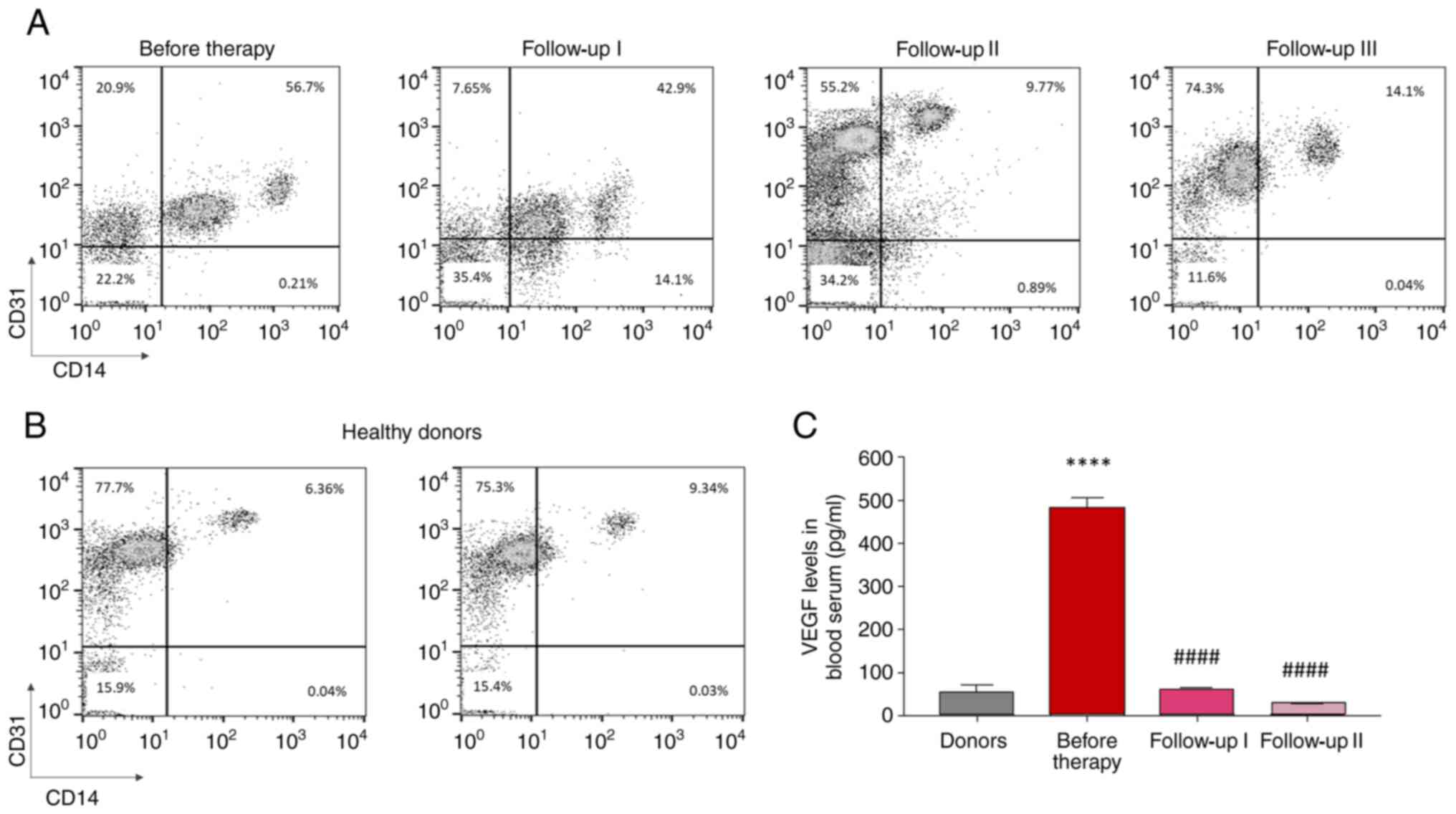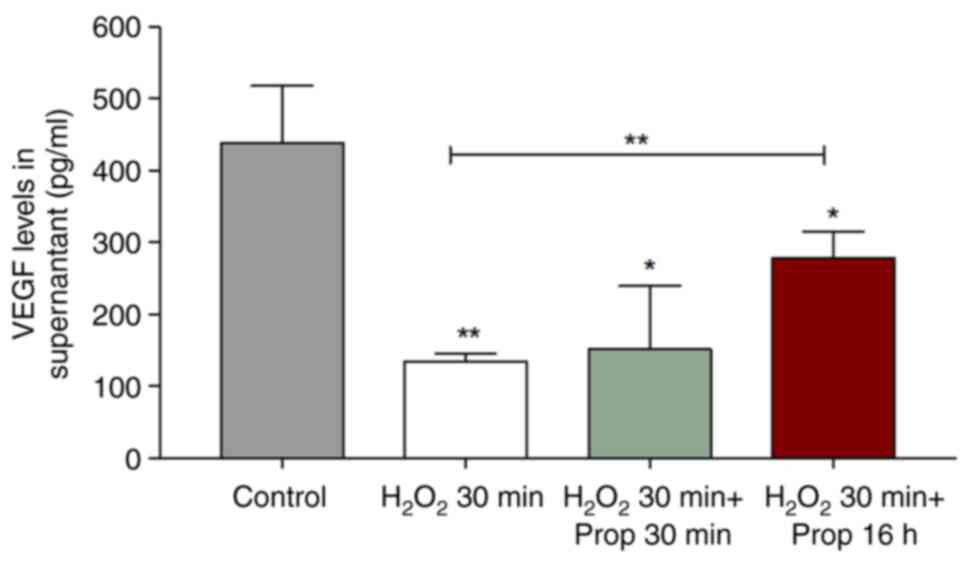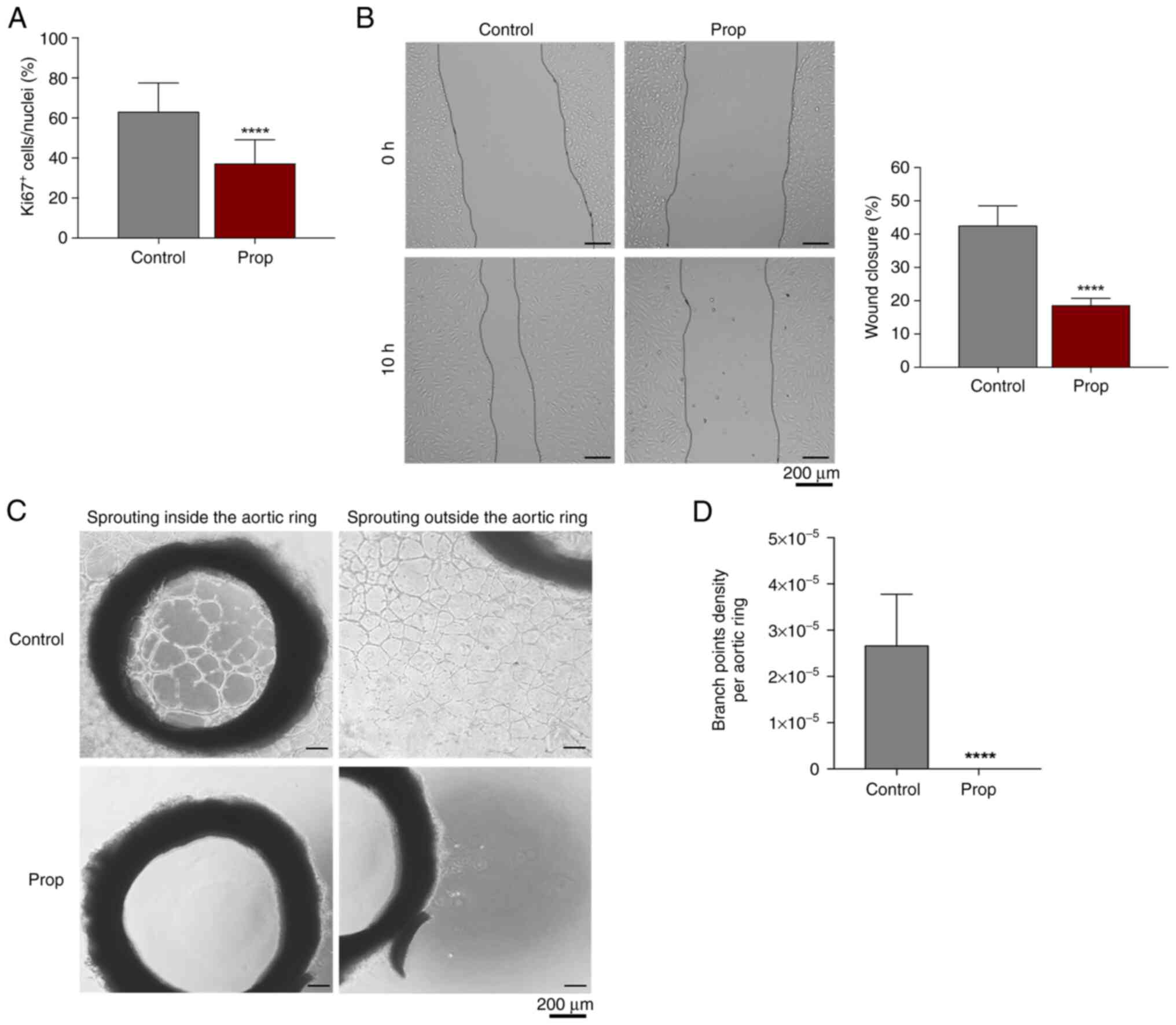|
1
|
Akers A, Al-Shahi Salman R, A Awad I,
Dahlem K, Flemming K, Hart B, Kim H, Jusue-Torres I, Kondziolka D,
Lee C, et al: Synopsis of guidelines for the clinical management of
cerebral cavernous malformations: Consensus recommendations based
on systematic literature review by the angioma alliance scientific
advisory board clinical experts panel. Neurosurg. 80:665–680.
2017.PubMed/NCBI View Article : Google Scholar
|
|
2
|
Flemming KD, Graff-Radford J, Aakre J,
Kantarci K, Lanzino G, Brown RD Jr, Mielke MM, Roberts RO, Kremers
W, Knopman DS, et al: Population-based prevalence of cerebral
cavernous malformations in older adults: Mayo clinic study of
aging. JAMA Neurol. 74:801–805. 2017.PubMed/NCBI View Article : Google Scholar
|
|
3
|
Goldstein HE and Solomon RA: Epidemiology
of cavernous malformations. Handb. Clin Neurol. 143:241–247.
2017.PubMed/NCBI View Article : Google Scholar
|
|
4
|
Gross BA, Lin N, Du R and Day AL: The
natural history of intracranial cavernous malformations. Neurosurg
Focus. 30(E24)2011.PubMed/NCBI View Article : Google Scholar
|
|
5
|
Batra S, Lin D, Recinos PF, Zhang J and
Rigamonti D: Cavernous malformations: Natural history, diagnosis
and treatment. Nat Rev Neurol. 5:659–670. 2009.PubMed/NCBI View Article : Google Scholar
|
|
6
|
Cox EM, Bambakidis NC and Cohen ML:
Pathology of cavernous malformations. Handb Clin Neurol.
143:267–277. 2017.PubMed/NCBI View Article : Google Scholar
|
|
7
|
Louis N and Marsh R: Simultaneous and
sequential hemorrhage of multiple cerebral cavernous malformations:
A case report. J Med Case Rep. 10(36)2016.PubMed/NCBI View Article : Google Scholar
|
|
8
|
Leblanc GG, Golanov E, Awad IA and Young
WL: Biology of Vascular Malformations of the Brain NINDS Workshop
Collaborators. Biology of vascular malformations of the brain.
Stroke. 40:e694–e702. 2009.PubMed/NCBI View Article : Google Scholar
|
|
9
|
Wüstehube J, Bartol A, Liebler SS, Brütsch
R, Zhu Y, Felbor U, Sure U, Augustin HG and Fischer A: Cerebral
cavernous malformation protein CCM1 inhibits sprouting angiogenesis
by activating DELTA-NOTCH signaling. Proc Natl Acad Sci USA.
107:12640–12645. 2010.PubMed/NCBI View Article : Google Scholar
|
|
10
|
Gibson CC, Zhu W, Davis CT, Bowman-Kirigin
JA, Chan AC, Ling J, Walker AE, Goitre L, Delle Monache S, Retta
SF, et al: Strategy for identifying repurposed drugs for the
treatment of cerebral cavernous malformation. Circulation.
131:289–299. 2015.PubMed/NCBI View Article : Google Scholar
|
|
11
|
Shenkar R, Shi C, Austin C, Moore T,
Lightle R, Cao Y, Zhang L, Wu M, Zeineddine HA, Girard R, et al:
RhoA kinase inhibition with fasudil versus simvastatin in murine
models of cerebral cavernous malformations. Stroke. 48:187–194.
2017.PubMed/NCBI View Article : Google Scholar
|
|
12
|
Apra C, Dumot C, Bourdillon P and
Pelissou-Guyotat I: Could propranolol be beneficial in adult
cerebral cavernous malformations? Neurosurg Rev. 42:403–408.
2019.PubMed/NCBI View Article : Google Scholar
|
|
13
|
Moschovi M, Alexiou GA, Stefanaki K,
Tourkantoni N and Prodromou N: Propranolol treatment for a giant
infantile brain cavernoma. J Child Neurol. 25:653–655.
2010.PubMed/NCBI View Article : Google Scholar
|
|
14
|
Dotan M and Lorber A: Congestive heart
failure with diffuse neonatal hemangiomatosis-case report and
literature review. Acta Paediatr. 102:e232–e238. 2013.PubMed/NCBI View Article : Google Scholar
|
|
15
|
Berti I, Marchetti F, Skabar A, Zennaro F,
Zanon D and Ventura A: Propranolol for cerebral cavernous
angiomatosis: A magic bullet. Clin Pediatr (Phila). 53:189–190.
2014.PubMed/NCBI View Article : Google Scholar
|
|
16
|
Miquel J, Bruneau B and Dupuy A:
Successful treatment of multifocal intracerebral and spinal
hemangiomas with propranolol. J Am Acad Dermatol. 70:e83–e84.
2014.PubMed/NCBI View Article : Google Scholar
|
|
17
|
Cavalheiro S, Campos HG and Silva da Costa
MD: A case of giant fetal intracranial capillary hemangioma cured
with propranolol. J Neurosurg Pediatr. 17:711–716. 2016.PubMed/NCBI View Article : Google Scholar
|
|
18
|
Reinhard M, Schuchardt F, Meckel S, Heinz
J, Felbor U, Sure U and Geisen U: Propranolol stops progressive
multiple cerebral cavernoma in an adult patient. J Neurol Sci.
367:15–17. 2016.PubMed/NCBI View Article : Google Scholar
|
|
19
|
Ritter MR, Reinisch J, Friedlander SF and
Friedlander M: Myeloid cells in infantile hemangioma. Am J Pathol.
168:621–628. 2006.PubMed/NCBI View Article : Google Scholar
|
|
20
|
Navarrete MG, Hernández AD, Collado-Ortiz
MA, Salinas-Lara C and Tena-Suck ML: Brain vascular lesions: A
clinicopathologic, immunohistochemistry, and ultrastructural
approach. Ann Diagn Pathol. 18:193–198. 2014.PubMed/NCBI View Article : Google Scholar
|
|
21
|
Seidmann L, Suhan T, Unger R, Gerein V and
Kirkpatrick CJ: Transient CD15-positive endothelial phenotype in
the human placenta correlates with physiological and pathological
fetoplacental immaturity. Eur J Obstet Gynecol Reprod Biol.
180:172–179. 2014.PubMed/NCBI View Article : Google Scholar
|
|
22
|
Yue W, Pi QM, Zhang WJ, Zhou GD, Cui L,
Liu W and Cao Y: Platelet endothelial cell adhesion molecule-1,
stage-specific embryonic antigen-1, and Flk-1 mark distinct
populations of mouse embryonic stem cells during differentiation
toward hematopoietic/endothelial cells. Stem Cells Dev.
19:1937–1948. 2010.PubMed/NCBI View Article : Google Scholar
|
|
23
|
Reed RL, Cheney CB, Fearon RE, Hook R and
Hehre FW: Propranolol therapy throughout pregnancy: A case report.
Anesth Analg. 53(214)1974.PubMed/NCBI
|
|
24
|
Cottrill CM, McAllister RG Jr, Gettes L
and Noonan JA: Propranolol therapy during pregnancy, labor, and
delivery: Evidence for transplacental drug transfer and impaired
neonatal drug disposition. J Pediatr. 91:812–814. 1977.PubMed/NCBI View Article : Google Scholar
|
|
25
|
Schoenfeld N, Epstein O, Nemesh L, Rosen M
and Atsmon A: Effects of propranolol during pregnancy and
development of rats. I. Adverse effects during pregnancy. Pediatr
Res. 12:747–750. 1978.PubMed/NCBI View Article : Google Scholar
|
|
26
|
Domingues G, Gouveia-Fernandes S, Salgado
D, et al: Monocytes/macrophages in cancer, from tumor aggressors to
vascular components-a new insight for anti-angiogenic therapy. In:
EACR-AACR-SIC special conference on anticancer drug action and drug
resistance from cancer biology to the clinic, pp98-99, 2015.
|
|
27
|
Lopes-Coelho F, Silva F, Gouveia-Fernandes
S, Martins C, Lopes N, Domingues G, Brito C, Almeida AM, Pereira SA
and Serpa J: Monocytes as endothelial progenitor cells (EPCs),
another brick in the wall to disentangle tumor angiogenesis. Cells.
9(107)2020.PubMed/NCBI View Article : Google Scholar
|
|
28
|
Curry CV: Differential blood count:
Reference range, interpretation, collection and panels. Medscape,
2015.
|
|
29
|
Coffelt SB, Tal AO, Scholz A, De Palma M,
Patel S, Urbich C, Biswas SK, Murdoch C, Plate KH, Reiss Y and
Lewis CE: Angiopoietin-2 regulates gene expression in
TIE2-expressing monocytes and augments their inherent proangiogenic
functions. Cancer Res. 70:5270–5280. 2010.PubMed/NCBI View Article : Google Scholar
|
|
30
|
Richardson MR and Yoder MC: Endothelial
progenitor cells: Quo vadis? J Mol Cell Cardiol. 50:266–272.
2011.PubMed/NCBI View Article : Google Scholar
|
|
31
|
Yoder MC: Human endothelial progenitor
cells. Cold Spring Harb Perspect Med. 2(a006692)2012.PubMed/NCBI View Article : Google Scholar
|
|
32
|
Kaur S, Sehgal R, Shastry SM, McCaughan G,
McGuire HM, Fazekas St de Groth B, Sarin S, Trehanpati N and Seth
D: Circulating endothelial progenitor cells present an inflammatory
phenotype and function in patients with alcoholic liver cirrhosis.
Front Physiol. 9(556)2018.PubMed/NCBI View Article : Google Scholar
|
|
33
|
Nakayama F, Nishihara S, Iwasaki H, Kudo
T, Okubo R, Kaneko M, Nakamura M, Karube M, Sasaki K and Narimatsu
H: CD15 expression in mature granulocytes is determined by alpha
1,3-fucosyltransferase IX, but in promyelocytes and monocytes by
alpha 1,3-fucosyltransferase IV. J Biol Chem. 276:16100–16106.
2001.PubMed/NCBI View Article : Google Scholar
|
|
34
|
Martin AW: Chapter 6-immunohistology of
non-hodgkin lymphoma. In: Dabbs DJ (ed), Diagnostic
Immunohistochemistry. 3rd edition. Philadelphia: W.B. Saunders,
pp156-188, 2011.
|
|
35
|
Chung JW, Park CJ, Cha CH, Cho YU, Jang S,
Chi HS, Seo EJ, Lee JH, Lee JH, Lee KH, et al: A combination of
CD15/CD10, CD64/CD33, CD16/CD13 or CD11b flow cytometric
granulocyte panels is sensitive and specific for diagnosis of
myelodysplastic syndrome. Ann Clin Lab Sci. 42:271–280.
2012.PubMed/NCBI
|
|
36
|
Elliott LA, Doherty GA, Sheahan K and Ryan
EJ: Human tumor-infiltrating myeloid cells: Phenotypic and
functional diversity. Front Immunol. 8(86)2017.PubMed/NCBI View Article : Google Scholar
|
|
37
|
Frieden IJ, Haggstrom AN, Drolet BA,
Mancini AJ, Friedlander SF, Boon L, Chamlin SL, Baselga E, Garzon
MC, Nopper AJ, et al: Infantile hemangiomas: Current knowledge,
future directions. Proceedings of a research workshop on infantile
hemangiomas, April 7-9, 2005, Bethesda, Maryland, USA. Pediatr
Dermatol. 22:383–406. 2005.PubMed/NCBI View Article : Google Scholar
|
|
38
|
Kim J: Introduction to cerebral cavernous
malformation: A brief review. BMB Rep. 49:255–262. 2016.PubMed/NCBI View Article : Google Scholar
|
|
39
|
Ganmore I and Achiron A: Cerebral
cavernous malformations. N Engl J Med. 377(71)2017.PubMed/NCBI View Article : Google Scholar
|
|
40
|
Léauté-Labrèze C, Dumas de la Roque E,
Hubiche T, Boralevi F, Thambo JB and Taïeb A: Propranolol for
severe hemangiomas of infancy. N Engl J Med. 358:2649–2651.
2008.PubMed/NCBI View Article : Google Scholar
|
|
41
|
Annabi B, Lachambre MP, Plouffe K,
Moumdjian R and Béliveau R: Propranolol adrenergic blockade
inhibits human brain endothelial cells tubulogenesis and matrix
metalloproteinase-9 secretion. Pharmacol Res. 60:438–445.
2009.PubMed/NCBI View Article : Google Scholar
|
|
42
|
Lamy S, Lachambre MP, Lord-Dufour S and
Béliveau R: Propranolol suppresses angiogenesis in vitro:
Inhibition of proliferation, migration, and differentiation of
endothelial cells. Vascul Pharmacol. 53:200–208. 2010.PubMed/NCBI View Article : Google Scholar
|
|
43
|
Lopes-Coelho F, Martins F, Hipólito A,
Mendes C, Sequeira CO, Pires RF, Almeida AM, Bonifácio VDB, Pereira
SA and Serpa J: The activation of endothelial cells relies on a
ferroptosis-like mechanism: Novel perspectives in management of
angiogenesis and cancer therapy. Front Oncol.
11(656229)2021.PubMed/NCBI View Article : Google Scholar
|
|
44
|
Sacramento JF, Olea E, Ribeiro MJ,
Prieto-Lloret J, Melo BF, Gonzalez C, Martins FO, Monteiro EC and
Conde SV: Contribution of adenosine and ATP to the carotid body
chemosensory activity in ageing. J Physiol. 597:4991–5008.
2019.PubMed/NCBI View Article : Google Scholar
|
|
45
|
Bergametti F, Denier C, Labauge P, Arnoult
M, Boetto S, Clanet M, Coubes P, Echenne B, Ibrahim R, Irthum B, et
al: Mutations within the programmed cell death 10 gene cause
cerebral cavernous malformations. Am J Hum Genet. 76:42–51.
2005.PubMed/NCBI View
Article : Google Scholar
|
|
46
|
Uebelhoer M, Boon LM and Vikkula M:
Vascular anomalies: From genetics toward models for therapeutic
trials. Cold Spring Harb. Perspect Med. 2(a009688)2012.PubMed/NCBI View Article : Google Scholar
|
|
47
|
Zabramski JM, Kalani MYS, Filippidis AS
and Spetzler RF: Propranolol treatment of cavernous malformations
with symptomatic hemorrhage. World Neurosurg. 88:631–639.
2016.PubMed/NCBI View Article : Google Scholar
|
|
48
|
Storch CH and Hoeger PH: Propranolol for
infantile haemangiomas: Insights into the molecular mechanisms of
action. Br J Dermatol. 163:269–274. 2010.PubMed/NCBI View Article : Google Scholar
|
|
49
|
Al-Majed AA, Bakheit AHH, Abdel Aziz HA,
Alajmi FM and AlRabiah H: Propranolol. Profiles Drug Subst Excip
Relat Methodol. 42:287–338. 2017.PubMed/NCBI View Article : Google Scholar
|
|
50
|
Rotter A and de Oliveira ZNP: Infantile
hemangioma: Pathogenesis and mechanisms of action of propranolol. J
Dtsch Dermatol Ges. 15:1185–1190. 2017.PubMed/NCBI View Article : Google Scholar
|
|
51
|
Zhou H, Li QF, Cao GL, Ling HZ, Dai HR and
Chen XH: Successful treatment of diffuse neonatal hemangiomatosis
with propranolol: a case report. J Dtsch Dermatol Ges. 12:625–628.
2014.PubMed/NCBI View Article : Google Scholar
|
|
52
|
Mazereeuw-Hautier J, Hoeger PH, Benlahrech
S, Ammour A, Broue P, Vial J, Ohanessian G, Léauté-Labrèze C,
Labenne M, Vabres P, et al: Efficacy of propranolol in hepatic
infantile hemangiomas with diffuse neonatal hemangiomatosis. J
Pediatr. 157:340–342. 2010.PubMed/NCBI View Article : Google Scholar
|
|
53
|
Padys P, Fouque L, Le Duff M, D'Hervé D
and Poulain P: Propranolol during pregnancy for large
chorioangioma. Med Hypotheses. 85:513–514. 2015.PubMed/NCBI View Article : Google Scholar
|
|
54
|
Lee HW, Choi HJ, Ha SJ, Lee KT and Kwon
YG: Recruitment of monocytes/macrophages in different tumor
microenvironments. Biochim Biophys Acta. 1835:170–179.
2013.PubMed/NCBI View Article : Google Scholar
|
|
55
|
Wheeler KC, Jena MK, Pradhan BS, Nayak N,
Das S, Hsu CD, Wheeler DS, Chen K and Nayak NR: VEGF may contribute
to macrophage recruitment and M2 polarization in the decidua. PLoS
One. 13(e0191040)2018.PubMed/NCBI View Article : Google Scholar
|
|
56
|
Jaipersad AS, Lip GY, Silverman S and
Shantsila E: The role of monocytes in angiogenesis and
atherosclerosis. J Am Coll Cardiol. 63:1–11. 2014.PubMed/NCBI View Article : Google Scholar
|
|
57
|
Zhu Y, Wu Q, Xu JF, Miller D, Sandalcioglu
IE, Zhang JM and Sure U: Differential angiogenesis function of CCM2
and CCM3 in cerebral cavernous malformations. Neurosurg Focus.
29(E1)2010.PubMed/NCBI View Article : Google Scholar
|
|
58
|
Li W, Shenkar R, Detter MR, Moore T,
Benavides C, Lightle R, Girard R, Hobson N, Cao Y, Li Y, et al:
Propranolol inhibits cavernous vascular malformations by β1
adrenergic receptor antagonism in animal models. J Clin Invest.
131(e144893)2021.PubMed/NCBI View Article : Google Scholar
|
|
59
|
Ciccarelli M, Sorriento D, Cipolletta E,
Santulli G, Fusco A, Zhou RH, Eckhart AD, Peppel K, Koch WJ,
Trimarco B and Iaccarino G: Impaired neoangiogenesis in
β2-adrenoceptor gene-deficient mice: Restoration by intravascular
human β2-adrenoceptor gene transfer and role of NFκB and CREB
transcription factors. Br J Pharmacol. 162:712–721. 2011.PubMed/NCBI View Article : Google Scholar
|
|
60
|
Ji Y, Chen S, Li K, Xiao X, Zheng S and Xu
T: The role of β-adrenergic receptor signaling in the proliferation
of hemangioma-derived endothelial cells. Cell Div.
8(1)2013.PubMed/NCBI View Article : Google Scholar
|
|
61
|
Madden KS, Szpunar MJ and Brown EB:
β-Adrenergic receptors (β-AR) regulate VEGF and IL-6 production by
divergent pathways in high β-AR-expressing breast cancer cell
lines. Breast Cancer Res Treat. 130:747–758. 2011.PubMed/NCBI View Article : Google Scholar
|
|
62
|
Yang EV, Kim SJ, Donovan EL, Chen M, Gross
AC, Webster Marketon JI, Barsky SH and Glaser R: Norepinephrine
upregulates VEGF, IL-8, and IL-6 expression in human melanoma tumor
cell lines: Implications for stress-related enhancement of tumor
progression. Brain Behav Immun. 23:267–275. 2009.PubMed/NCBI View Article : Google Scholar
|
|
63
|
Sasaki M, North PE, Elsey J, Bubley J, Rao
S, Jung Y, Wu S, Zou MH, Pollack BP, Kumar J, et al: Propranolol
exhibits activity against hemangiomas independent of beta blockade.
NPJ Precis Oncol. 3(27)2019.PubMed/NCBI View Article : Google Scholar
|
|
64
|
Seebauer CT, Graus MS, Huang L, McCann A,
Wylie-Sears J, Fontaine F, Karnezis T, Zurakowski D, Staffa SJ,
Meunier F, et al: Non-beta blocker enantiomers of propranolol and
atenolol inhibit vasculogenesis in infantile hemangioma. J Clin
Invest. 132(e151109)2022.PubMed/NCBI View Article : Google Scholar
|
|
65
|
Ruan Q, Zhao C, Ye Z, Ruan J, Xie Q and
Xie W: Effect and possible mechanism of monocyte-derived VEGF on
monocyte-endothelial cellular adhesion after electrical burns.
Burns. 41:825–832. 2015.PubMed/NCBI View Article : Google Scholar
|
|
66
|
Lanfranconi S, Scola E, Bertani GA, Zarino
B, Pallini R, d'Alessandris G, Mazzon E, Marino S, Carriero MR,
Scelzo E, et al: Propranolol for familial cerebral cavernous
malformation (Treat_CCM): Study protocol for a randomized
controlled pilot trial. Trials. 21(401)2020.PubMed/NCBI View Article : Google Scholar
|


















